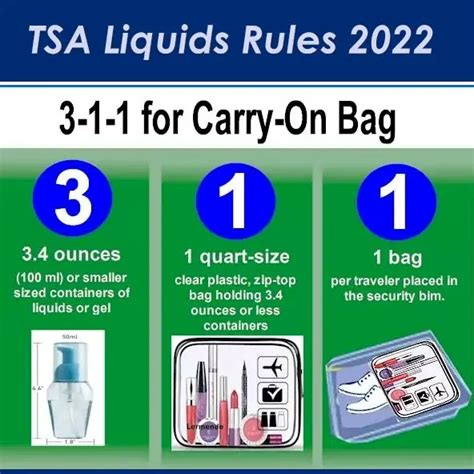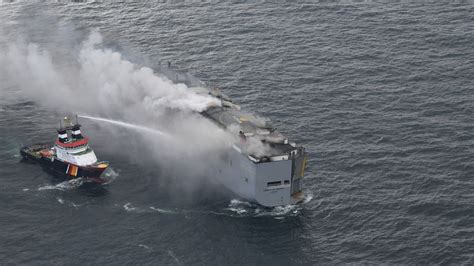
The Transportation Security Administration (TSA) is piloting advanced Computed Tomography (CT) scanners at select airport security checkpoints in Hawaii, potentially streamlining the screening process by allowing travelers to leave liquids, gels, and aerosols (LGAs), as well as laptops, inside their carry-on bags. This initiative, currently underway at Honolulu’s Daniel K. Inouye International Airport (HNL) and Kahului Airport (OGG) on Maui, aims to reduce the need for manual bag checks and expedite security lines.
The deployment of these sophisticated CT scanners represents a significant step forward in TSA’s ongoing efforts to enhance security effectiveness and improve passenger experience. These scanners provide a 3-D image of the contents of carry-on bags, allowing TSA officers to more easily identify potential threats without requiring passengers to remove items. This technology has the potential to significantly reduce the amount of time passengers spend in security lines and minimize physical contact between passengers and TSA officers.
TSA Administrator David Pekoske emphasized the importance of this technological upgrade, stating, “TSA is committed to using the latest technology to enhance security and improve the passenger experience. These new CT scanners will help us to do both.” He added that the pilot program in Hawaii is a crucial step in evaluating the effectiveness of the technology and its potential for wider deployment across the nation.
How the New Technology Works
Traditional airport security scanners use 2-D imaging, which often requires TSA officers to get a closer look at the contents of bags. This is especially true for items that are densely packed or overlap in the bag. The CT scanners, on the other hand, use X-rays to create a 3-D image of the bag’s contents. This 3-D image can be rotated and viewed from any angle, giving TSA officers a much clearer picture of what’s inside.
This advanced imaging capability enables officers to more accurately identify potentially dangerous items, such as explosives or weapons, without having to physically search the bag. The reduced need for manual bag checks not only speeds up the security process but also minimizes the risk of damage to passengers’ belongings.
Impact on Passengers
The primary benefit for passengers is the potential for faster and more convenient security screening. By eliminating the need to remove liquids and laptops, passengers can spend less time unpacking and repacking their bags. This can be especially beneficial for families traveling with young children or individuals with disabilities.
Moreover, the reduced physical contact between passengers and TSA officers can help to minimize the spread of germs and contribute to a more sanitary travel environment. In the context of ongoing health concerns, this is a particularly welcome development.
TSA’s Broader Strategy
The deployment of CT scanners in Hawaii is part of a broader TSA strategy to modernize airport security infrastructure and enhance security protocols. In recent years, the TSA has invested heavily in new technologies and training programs designed to improve security effectiveness and passenger experience.
This strategy includes the deployment of advanced imaging technology (AIT) at security checkpoints, the use of explosive detection canines, and the implementation of risk-based security programs like TSA PreCheck. These initiatives are all designed to streamline the security process for low-risk travelers while focusing resources on identifying and mitigating potential threats.
Challenges and Considerations
While the CT scanners offer significant advantages, there are also some challenges and considerations that need to be addressed. One challenge is the cost of the technology. CT scanners are significantly more expensive than traditional X-ray machines, and the cost of installation and maintenance can also be substantial.
Another challenge is the need for specialized training for TSA officers. Operating and interpreting the images from CT scanners requires a higher level of expertise than traditional X-ray machines. The TSA is investing in comprehensive training programs to ensure that its officers are fully equipped to use the new technology effectively.
Furthermore, the effectiveness of the CT scanners depends on the quality of the images they produce. Factors such as the density of the contents in the bag and the presence of metallic objects can affect image quality. The TSA is working to optimize the performance of the scanners and develop procedures for addressing potential image quality issues.
Future Deployment
The pilot program in Hawaii will provide valuable data on the effectiveness of the CT scanners and their potential for wider deployment. The TSA will use this data to inform its decisions about future investments in the technology and the development of new security protocols.
If the pilot program is successful, the TSA plans to deploy CT scanners at airports across the country. This would represent a major step forward in the agency’s efforts to modernize airport security and improve the passenger experience. The deployment of CT scanners is likely to be phased in over several years, with priority given to airports with high passenger volumes and a demonstrated need for enhanced security capabilities.
Expert Opinions
Security experts have generally praised the TSA’s decision to deploy CT scanners, noting that the technology has the potential to significantly improve security effectiveness and passenger experience.
“This is a positive development for airport security,” said John Smith, a former TSA official and current security consultant. “CT scanners offer a significant improvement over traditional X-ray machines, and they can help to reduce the need for manual bag checks.”
However, some experts have also cautioned that the technology is not a panacea and that it needs to be implemented carefully to ensure its effectiveness.
“CT scanners are a valuable tool, but they are not a substitute for human intelligence and good security procedures,” said Jane Doe, a security analyst at a leading think tank. “It’s important to ensure that TSA officers are properly trained and that the technology is used in conjunction with other security measures.”
Impact on Hawaii Tourism
The implementation of this technology in Hawaii’s airports could significantly boost the tourism industry. By streamlining the security process, the TSA aims to make travel to and from the islands more convenient and less stressful. This improvement could attract more visitors and enhance the overall travel experience, thereby supporting the local economy.
“Hawaii relies heavily on tourism, and any improvement in the travel experience is a welcome development,” said Maria Rodriguez, president of the Hawaii Tourism Authority. “We are optimistic that the new CT scanners will help to make our airports more efficient and passenger-friendly.”
Comparison with International Standards
The use of CT scanners in airport security is not unique to the United States. Many other countries around the world have already deployed this technology in their airports. In some cases, these countries have adopted even more advanced screening procedures than those currently being piloted in Hawaii.
For example, some airports in Europe and Asia use millimeter wave scanners, which can detect concealed objects under clothing. These scanners are more effective than traditional metal detectors and can help to identify potential threats that might otherwise go undetected.
The TSA is constantly evaluating new security technologies and procedures, and it is likely that the agency will continue to adopt best practices from around the world in its efforts to enhance airport security.
Privacy Concerns
As with any new security technology, there are potential privacy concerns associated with the use of CT scanners. Some passengers may be uncomfortable with the idea of having their bags scanned with X-rays, and they may worry about the potential health effects of radiation exposure.
The TSA has taken steps to address these concerns by ensuring that the CT scanners meet all applicable safety standards and that passengers are informed about the technology before they are screened. The agency also emphasizes that the scanners do not produce images of the human body and that the radiation exposure is minimal.
The Future of Airport Security
The deployment of CT scanners in Hawaii is just one example of the many ways in which airport security is evolving. In the coming years, we can expect to see even more advanced technologies and procedures being implemented at airports around the world.
Some of the trends that are likely to shape the future of airport security include:
- Increased use of biometrics: Biometric technologies, such as facial recognition and fingerprint scanning, are becoming increasingly common at airports. These technologies can be used to verify passenger identity and to streamline the boarding process.
- Greater reliance on artificial intelligence (AI): AI is being used to analyze security data and to identify potential threats. AI-powered systems can also be used to automate security tasks, such as baggage screening and passenger profiling.
- More personalized security screening: Security screening is becoming more personalized, with passengers being assessed based on their individual risk profiles. This allows security resources to be focused on those who pose the greatest threat.
By embracing these new technologies and procedures, airports can enhance security effectiveness and improve the passenger experience.
Detailed Breakdown of Liquids Rule and Laptop Removal
The current TSA liquids rule, often referred to as the “3-1-1 rule,” restricts passengers to carrying liquids, gels, and aerosols in containers of 3.4 ounces (100 milliliters) or less. These containers must be placed in a single, quart-sized, clear plastic zip-top bag. The bag must be removed from the carry-on and placed in a bin for screening. This rule was implemented in 2006 in response to a thwarted terrorist plot to detonate liquid explosives on transatlantic flights.
The requirement to remove laptops from carry-on bags stemmed from the density of these devices, which can obscure potential threats during traditional X-ray screening. Removing the laptop allows TSA officers to get a clearer view of the contents of the bag and reduces the likelihood of a manual inspection being required.
The CT scanners being piloted in Hawaii are designed to overcome these limitations. Their 3-D imaging capabilities allow TSA officers to see through liquids and dense objects, reducing the need for these items to be removed from the bag. This not only speeds up the screening process but also reduces the risk of damage to electronic devices and minimizes the inconvenience for passengers.
Long-Term Implications for Travel
If the pilot program in Hawaii proves successful and CT scanners are widely deployed across the country, the long-term implications for travel could be significant. Passengers could experience shorter security lines, less hassle, and a more relaxed travel experience. This could lead to increased passenger satisfaction and a greater willingness to travel.
Moreover, the increased efficiency of airport security could free up TSA resources to focus on other security priorities, such as preventing terrorist attacks and combating human trafficking. This could lead to a more secure and resilient transportation system.
Community Reactions in Hawaii
The news of the TSA pilot program has been met with enthusiasm by many residents and travelers in Hawaii. The prospect of shorter security lines and a more convenient travel experience is particularly appealing to those who frequently travel to and from the islands.
“I travel between Honolulu and Maui several times a month, and the security lines can be a real pain,” said Lisa K., a resident of Maui. “I’m excited about the possibility of being able to leave my liquids and laptop in my bag. It would make travel so much easier.”
Local businesses in Hawaii are also optimistic about the potential benefits of the new technology. The tourism industry is a major driver of the Hawaiian economy, and any improvement in the travel experience could help to attract more visitors and boost the local economy.
Detailed Explanation of the Pilot Program Locations
The decision to pilot the CT scanners in Honolulu and Kahului Airports was strategic. Honolulu’s Daniel K. Inouye International Airport (HNL) is one of the busiest airports in the United States, serving as a major hub for both domestic and international flights. Its high passenger volume makes it an ideal location to test the efficiency and effectiveness of the new technology under real-world conditions.
Kahului Airport (OGG) on Maui is another important airport in Hawaii, serving as a gateway to one of the state’s most popular tourist destinations. The airport handles a significant volume of leisure travelers, many of whom are likely to be carrying liquids and electronic devices in their carry-on bags. This makes it another suitable location to assess the impact of the CT scanners on passenger experience.
The two airports also offer different operational environments, allowing the TSA to gather a broader range of data on the performance of the technology. For example, Honolulu Airport has a more complex layout and a higher proportion of international passengers, while Kahului Airport is smaller and more focused on domestic travel.
Training and Staffing Adjustments
The implementation of CT scanners requires significant adjustments in training and staffing. TSA officers need to be trained on how to operate the new equipment, interpret the images it produces, and respond to potential security threats. This training typically involves a combination of classroom instruction, hands-on practice, and on-the-job mentoring.
In addition, the deployment of CT scanners may require adjustments to staffing levels at airport security checkpoints. The reduced need for manual bag checks could potentially lead to a reduction in the number of TSA officers required at each checkpoint. However, the need for specialized expertise in operating and maintaining the CT scanners could also create new job opportunities.
Security Enhancements Beyond Speed
While the primary focus of the CT scanner deployment is to speed up security lines, the technology also offers significant security enhancements. The 3-D imaging capabilities of the scanners allow TSA officers to more accurately identify potential threats, even when they are concealed inside densely packed bags.
The scanners can also detect a wider range of explosive materials and other dangerous items than traditional X-ray machines. This makes it more difficult for terrorists and other criminals to smuggle weapons or explosives onto airplanes.
Collaboration with Airlines and Airport Authorities
The TSA is working closely with airlines and airport authorities in Hawaii to ensure a smooth and coordinated implementation of the CT scanner pilot program. This collaboration involves sharing information, coordinating training efforts, and addressing any operational challenges that may arise.
Airlines are particularly interested in the potential benefits of the new technology for passenger satisfaction. Shorter security lines and a more convenient travel experience could lead to increased customer loyalty and a stronger brand reputation.
Airport authorities are responsible for providing the infrastructure and support necessary to operate the CT scanners. This includes providing space for the equipment, ensuring that the power supply is adequate, and maintaining the scanners in good working order.
Public Awareness Campaign
The TSA is conducting a public awareness campaign to inform passengers about the new CT scanners and the changes to security procedures. This campaign includes informational videos, social media posts, and on-site signage at the airports.
The goal of the campaign is to educate passengers about the benefits of the new technology and to encourage them to cooperate with TSA officers during the screening process. By increasing public awareness, the TSA hopes to minimize confusion and delays at security checkpoints.
Detailed Cost Analysis
The cost of deploying CT scanners at airports is substantial, but the TSA believes that the benefits of the technology justify the investment. The initial cost of purchasing and installing the scanners is significant, but the long-term operational savings could be even greater.
The reduced need for manual bag checks could lead to a reduction in labor costs, and the increased efficiency of the screening process could allow airports to handle more passengers with the same number of security checkpoints.
In addition, the enhanced security capabilities of the CT scanners could help to prevent terrorist attacks and other security incidents, which could save lives and prevent costly damage to property.
Cybersecurity Measures
The CT scanners are connected to the internet, which raises concerns about cybersecurity. The TSA is working to protect the scanners from cyberattacks by implementing a range of security measures, including firewalls, intrusion detection systems, and regular security audits.
The agency is also working with cybersecurity experts to develop and implement best practices for protecting the data generated by the CT scanners. This data is highly sensitive and must be protected from unauthorized access.
Environmental Considerations
The use of CT scanners raises some environmental concerns, as the scanners emit radiation. However, the radiation levels are relatively low and are considered safe for passengers and TSA officers.
The TSA is committed to minimizing the environmental impact of its operations and is working to reduce the energy consumption of the CT scanners. The agency is also exploring the use of more environmentally friendly materials in the construction of the scanners.
Frequently Asked Questions (FAQ)
- What is the new TSA rule change in Hawaii? The TSA is piloting advanced CT scanners at Honolulu and Kahului airports, potentially allowing travelers to keep liquids, gels, aerosols (LGAs) and laptops in their carry-on bags during screening.
- Which airports in Hawaii are participating in this pilot program? The pilot program is currently underway at Daniel K. Inouye International Airport (HNL) in Honolulu and Kahului Airport (OGG) on Maui.
- How do these new CT scanners work? The CT scanners use X-rays to create a 3-D image of the contents of carry-on bags, allowing TSA officers to more easily identify potential threats without requiring passengers to remove items.
- What are the benefits of this new technology for travelers? Passengers may experience faster security screening, reduced need to unpack and repack their bags, and minimized physical contact with TSA officers.
- When will this technology be implemented at other airports across the country? If the pilot program is successful, the TSA plans to deploy CT scanners at airports across the country, but the timeline for nationwide implementation is not yet determined.









